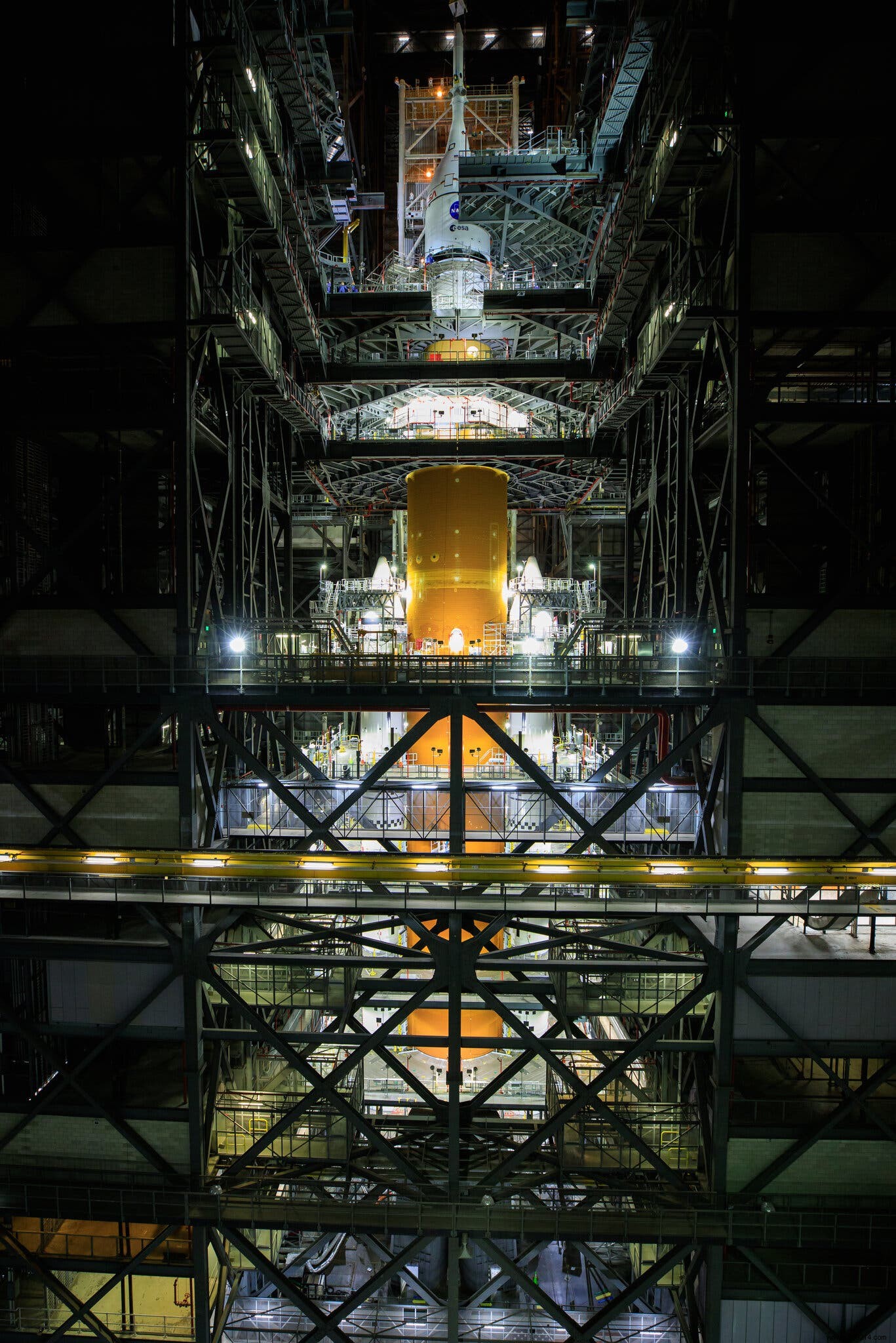The giant SLS launcher for the Artemis 1 mission, which plans to send an Orion capsule to circle the Moon, is set to do its "wet dress rehearsal" on the launch pad in February. If successful, the mission could be launched as early as next March.
The first part of NASA's ambitious Artemis program, which aims to set foot on the Moon for the first time since the end of the Apollo era, is not materializing little. For several months, the agency's new workhorse, a new super-heavy launcher named Space Launch System (or SLS), has been undergoing a series of tests to ensure that all parts can withstand the stresses of flight. /P>
Most recently, this Tuesday, January 11, the access arm to the Orion spacecraft was both retracted and extended to ensure it functions properly. Eventually, this arm will be intended to provide safe access for astronauts to the SLS rocket during missions. It is also used by technicians during assembly and test operations in the Vehicle Assembly Building (VAB) at Kennedy Space Center, Florida.
Regarding the SLS rocket, NASA has just completed a series of technical tests on the rocket's core stage, which is also inside the VAB. The first task was to replace and test one of the four RS-25 motor controllers. The team then made sure that the flight computers, motor controllers, and basic stage systems were communicating and working properly. Finally, the technicians simulated the different engine movements likely to occur during the flight.

Now NASA plans to do a second countdown test . The goal will be to ensure SLS and the Orion ship respond as intended.
Finally, the ship wearing its booster will head to the launch pad in February. From then on, a final pre-launch test, known as a wet dress rehearsal, will be operated. During it, the thrusters will be filled with liquid hydrogen and liquid oxygen cooled to ultra-low temperatures. Engineers will then control the fuel filling phase before draining it.
If all goes as planned, the launch of the mission should be able to take place next March or April . However, everything will depend on the weather. This flight will then simply aim to test the safety of the Orion vehicle. During the Artemis-2 mission, a crew of four will then make a similar trip around the Moon. Finally, NASA hopes to be able to bring astronauts back to the lunar surface as part of the Artemis 3 mission, which should take place after 2025 .